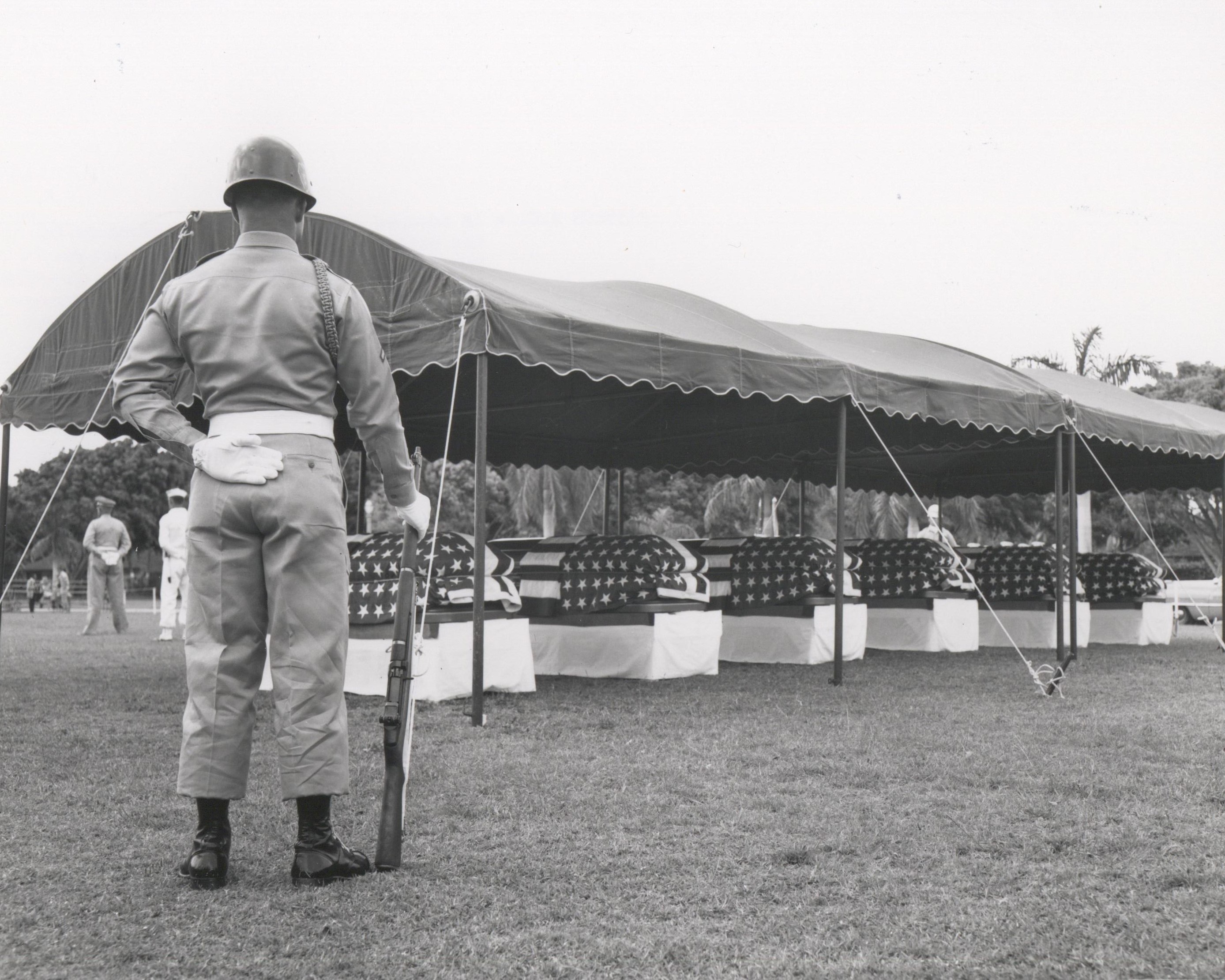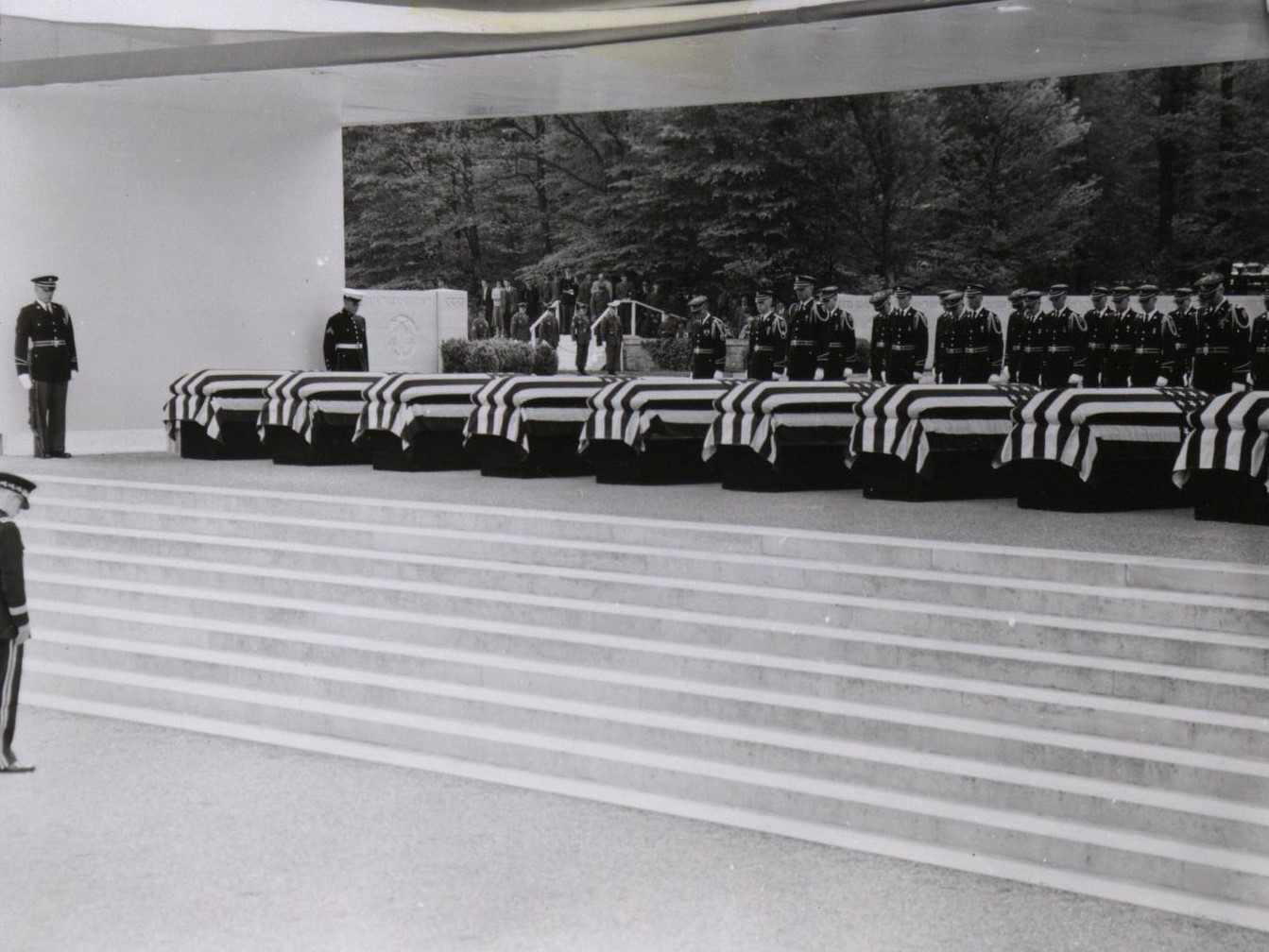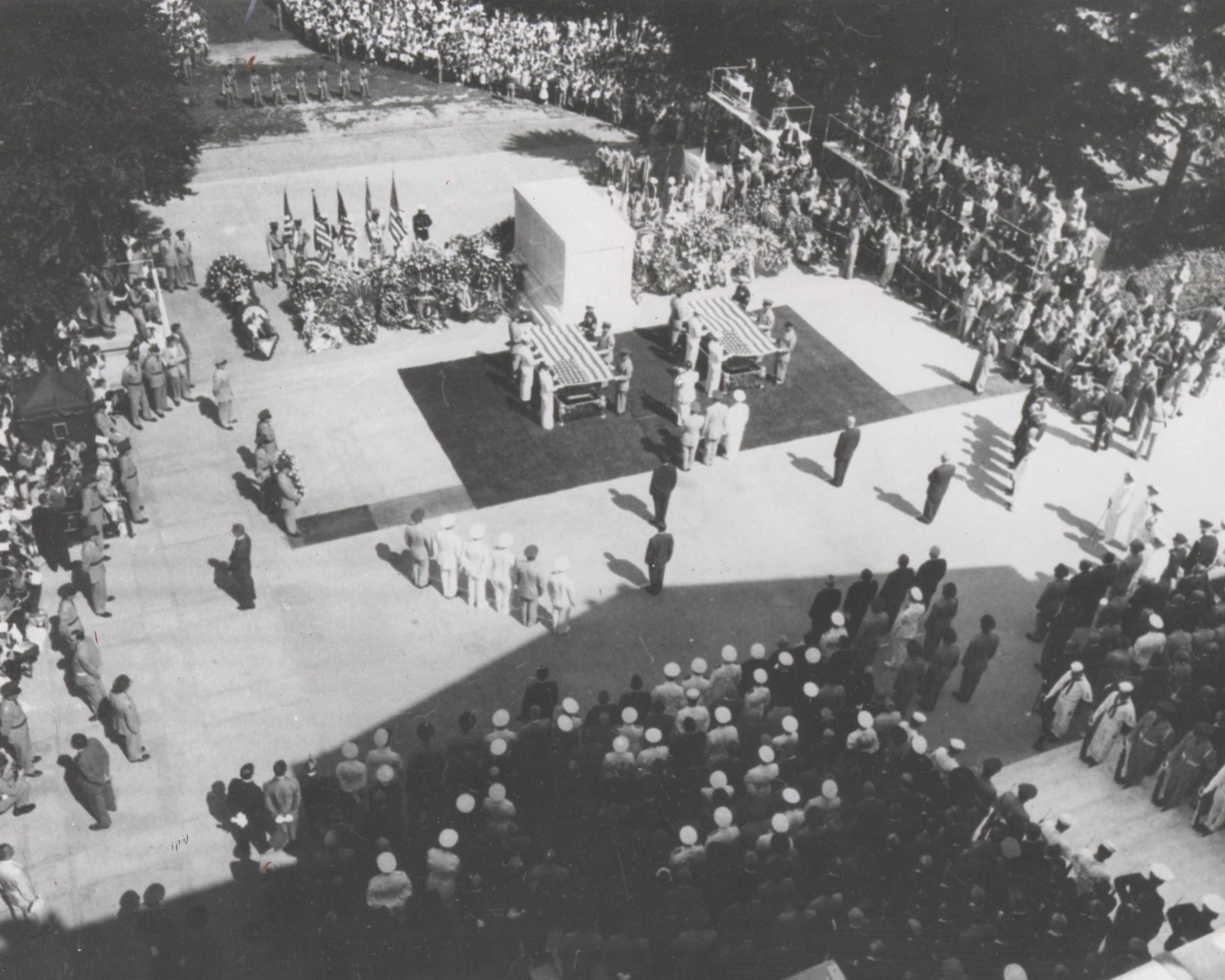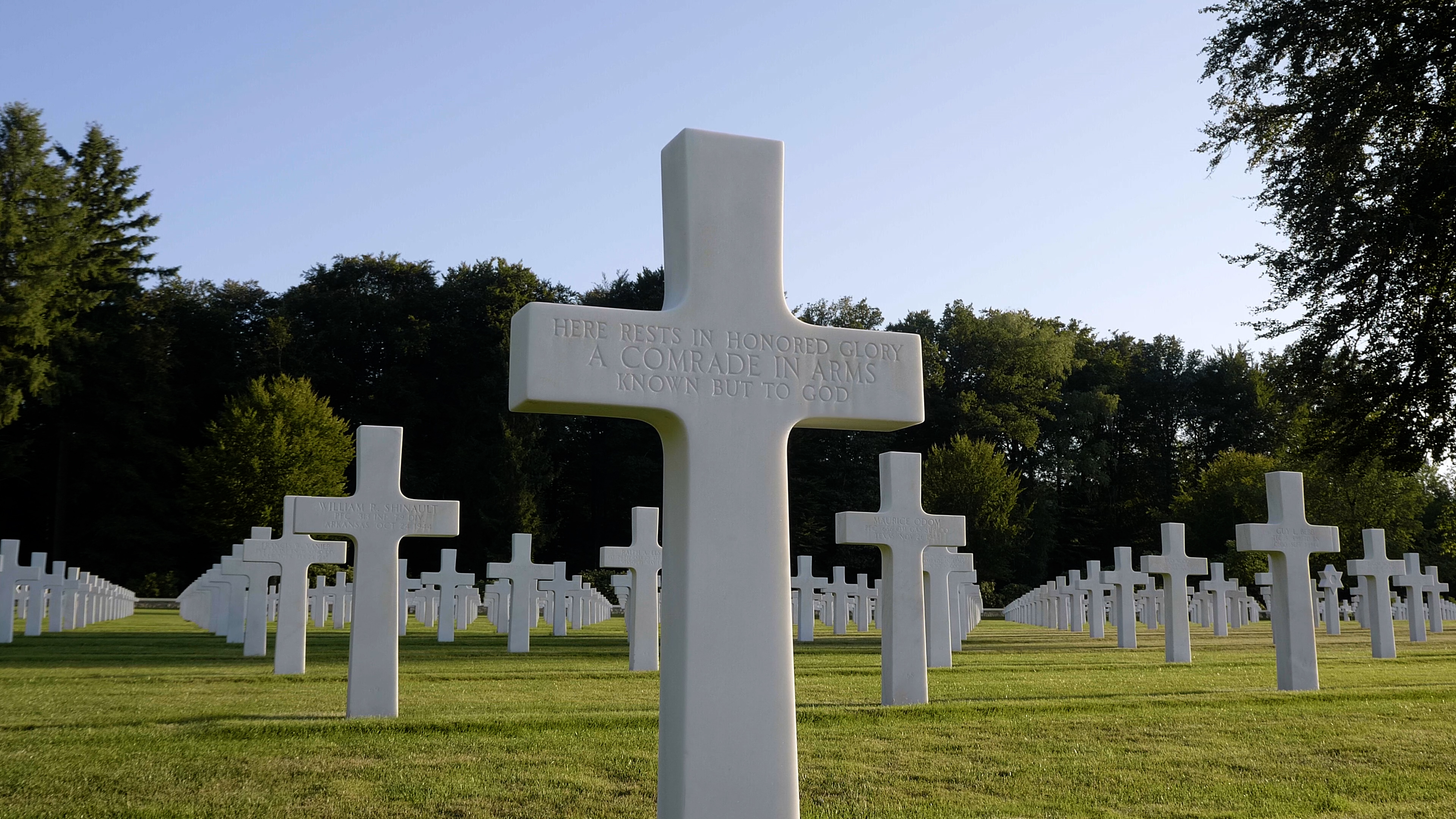From overseas American military cemeteries to Arlington National Cemetery: the story behind the Unknown Soldier from WWII
Shortly after the close of the war, Congress passed a bill providing for the entombment of a World War II unknown to join that of unknown from World War I on the Amphitheater plaza at Arlington National Cemetery. The goal was to have the selected remains interred on Memorial Day, 1951. The U.S. entering another war delayed this for seven years.
It was decided that a similar process to that of the selection of the unknown from World War I would be followed. As the unknown was intended to represent all of the fallen, this process was designed to guarantee the anonymity of the remains interred at Arlington. Remains were drawn from all theaters the war and all trace of their original history and location was erased before a single set of remains was selected in a series of ceremonies.
In the Pacific, six sets of remains were drawn from Fort McKinley Cemetery, now Manila American Cemetery, and the National Memorial Cemetery of the Pacific, with a single set of remains selected during a ceremony in Hawaii.
For the European and North African Theaters, 13 sets of remains, one from each ABMC World War II cemetery, were brought to Epinal American Cemetery. The caskets were draped with American flags and placed side by side at the memorial. On May 12, 1958, in a solemn ceremony, Gen. Edward J. O'Neill, commanding general of the U.S. Army Communication Zone, Europe, selected the unknown to later represent the European theater.
The remains that were not selected on May 12, 1958, at Epinal American Cemetery, were later returned to ABMC and buried in several WWII military cemeteries in Europe.
About Epinal American Cemetery:
Epinal American Cemetery is one of World War II American military cemeteries located in France.
It contains the graves of more than 5,000 of America's war dead, including 66 unknown burials, most of whom lost their lives in the campaigns across northeastern France to the Rhine River and beyond into Germany. An additional 424 names are engraved and honored on the cemetery's Walls of the Missing.
More about the cemetery: www.abmc.gov/Epinal
Video tour of the cemetery: youtu.be/4g3_DE4P6dg
About Manila American Cemetery:
With more than 17,000 burials, including 3,680 unknown burials, Manila American Cemetery, Philippines, is the largest American military cemetery located overseas. The names of more than 36,000 are memorialized on its Walls of the Missing. Most of these men and women lost their lives in operations in New Guinea and the Philippines during World War II.
More about the cemetery: www.abmc.gov/Manila
Video tour of the cemetery: youtu.be/_gVpJkr4GAU
About the American Battle Monuments Commission:
Since 1923, ABMC’s sacred mission is to honor the service, achievements, and sacrifice of the more than 200,000 U.S. service members buried and memorialized at 26 cemeteries and 32 monuments throughout the globe.
More about ABMC’s cemeteries and memorials: www.abmc.gov/cemeteries-memorials




